Do you have a question about the Minelab X-Terra 70 and is the answer not in the manual?
| Brand | Minelab |
|---|---|
| Model | X-Terra 70 |
| Pinpoint Mode | Yes |
| Type | Metal Detector |
| Frequency | 7.5 kHz / 18.75 kHz |
| Weight | 1.3 kg |
| Display | LCD |
| Ground Balance | Manual / Automatic |
| Discrimination | Yes |
| Target ID | Yes |
| Battery | 4 x AA |
| Sensitivity Adjustment | Yes |
| Battery Life | Approximately 20 hours |
| Waterproof | No |
| Coil Options | Various sizes available |
Explains Minelab's VFLEX technology using digital and mixed-signal components for enhanced performance.
Describes the two basic coil types (Concentric and Double D) and their benefits.
Lists all the components included in the X-Terra 70 package for assembly verification.
Details on how to connect the metal detector coil to the lower shaft using rubber washers and a plastic bolt.
Instructions on how to assemble the three shaft sections using spring-loaded pins and twistlocks.
Instructions for attaching and adjusting the armrest to the upper shaft for comfortable use.
Steps to securely attach the control box to the end of the detector's handle.
Guidance on winding and securing the coil cable along the shaft using velcro tabs.
Steps for correctly inserting AA batteries into the control box battery compartment.
Explains the function of each button on the X-Terra 70 control panel, including POWER, MODE, PATTERNS, etc.
Details the various icons and indicators displayed on the X-Terra 70's LCD screen.
Explains the two primary detecting modes: Coin & Treasure Mode and Prospecting Mode.
Instructions on how to adjust the shaft length and armrest position for comfortable handling.
Guidance on proper coil sweeping technique, including overlap, speed, and maintaining consistent height.
Exercise to familiarize with detector's audio and visual signals using various metal objects.
Explains Target ID numbers and discrimination segments for identifying metal objects.
How to activate and deactivate Target ID Stability for improved display accuracy in mineralized soil.
Details the All Metal, Pattern 1, 2, 3, and Iron Mask settings for target rejection.
How to select between different discrimination patterns and adjust Iron Mask settings.
Step-by-step guide to customising discrimination patterns by rejecting specific target IDs.
Explains how to enable and use the Pinpoint feature for precise target location.
Provides guidance on using tools, digging, and refilling holes for responsible target recovery.
Explains display states and how to adjust core settings like Sensitivity, Volume, Noise Cancel, Threshold, and Tones.
Provides guidance on setting the optimal sensitivity level for different ground conditions and environments.
Explains how to set speaker and headphone volume levels for optimal audio response.
Explains how to use Noise Cancel to reduce interference from electromagnetic sources.
Details how to set the Threshold level for distinguishing between desired and undesired targets.
Explains how to select and adjust target tones and threshold tones for different detection modes.
Explains Ground Balance (Normal and Beach) and how to activate and adjust it for optimal performance.
Details the Auto, Manual, and Track methods for adjusting the detector's Ground Balance.
How to reset settings to factory defaults and erase custom patterns.
Explains various sounds like Threshold, Target Response, Pinpoint, Noise, and False Detections.
Covers sounds related to Start Up, acknowledgements, completion, errors, overload, and low battery.
Explains different VFLEX coil types (frequencies) and how to identify them.
Lists and explains common error messages displayed by the detector, like Coil Unplugged and Overload.
Information on using headphones and the function of the skid plate.
Details on accessory coils, short shaft, and environmental cover for the control box.
Covers care, cleaning, battery advice, environmental limits, and detailed technical specs of the X-Terra 70.
Provides space for users to record personal notes and preferences related to detector settings.
A form for recording details of detector faults, owner information, and repair requests.
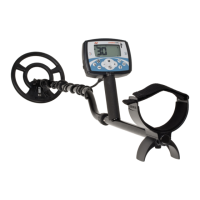
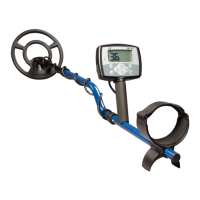

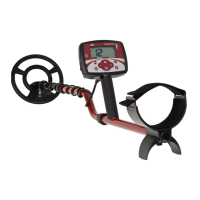


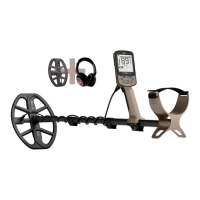
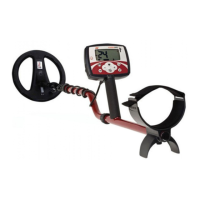
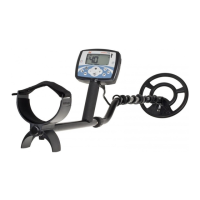
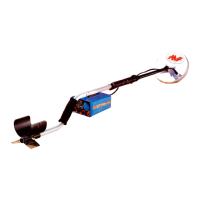
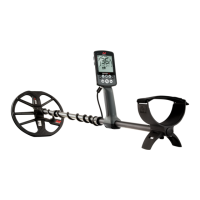

